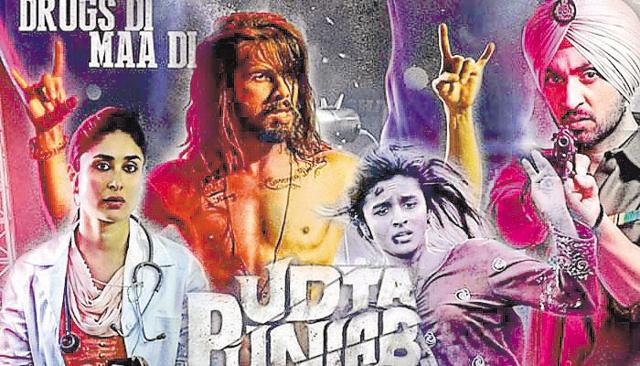By the way: ‘Udta Punjab’ is scared of deeper reality
Near the climax of ‘Udta Punjab’, Tommy Singh is looking for a girl. He bumps into a couple of fellow junkies at the corner of a village. The junkies think he’s looking for ‘stuff’. “Supply down hai… Mere ton le le veere (Take some from me, bro)!” goes one of them, extending his arm to offer an injection of pure high. That’s true Punjabi culture. We are willing to care and share, even in times of shortage. I wonder why there was such fuss about the movie vilifying us.
Near the climax of ‘Udta Punjab’, Tommy Singh is looking for a girl. He bumps into a couple of fellow junkies at the corner of a village. The junkies think he’s looking for ‘stuff’. “Supply down hai… Mere ton le le veere (Take some from me, bro)!” goes one of them, extending his arm to offer an injection of pure high. That’s true Punjabi culture. We are willing to care and share, even in times of shortage. I wonder why there was such fuss about the movie vilifying us.

But Tommy is not looking for stuff. He wants to rescue his heroine. He wants to rescue himself. Yes, it is a movie after all.
So, Tommy is a fallen-from-grace pop star ruined by cocaine and other drugs, the stuff that he sings about. His personal trauma is traced to the fact that his father died when he was young.
Also read I Facts, figures and falsehoods of Punjab’s drug menace in 5 points
On the other end, we have a cop who is also looking to rescue himself, from the guilt of complicity in the drug trade that is, you know, run by politicians. He has a younger brother, who turns out to be an addict, more of a prop to motivate the goodness in the cop, less of a character that would take you to the depths of an addict’s helplessness. And, by the way, their father too died when they were young.
There is the ‘lady’ doctor willing to do the difficult task of rehabilitating addicts. What’s her motivation? We never know, except that she has “seen it herself”. By the end, she finds the cop rather charming after their investigative-journalism sojourn. Women do that, you know; they fall for the lead character.
The standout character is the outsider-insider, a nameless Biharan who curses herself for having come to Punjab and being stuck with the drug mafia as a sex slave. But what’s her back story? Yes, you guessed it. Her father died when she was young.
Also read I Chitta ve? Study shows Punjabi songs driving youth towards drugs
Green revolution, songs inspiring intoxication, the pharmaceutical industry on the Punjab-Himachal border, the school rallies with placards against drugs, the ruins of Mughal-era buildings turning into havens of addicts, it’s all there. And it’s all real.
But reality is deeper, simpler, yet too scary to be shown beyond the very real language, populated by MC, BC and all other things that mostly refer to mothers and sisters being raped. The rest is pretty much newspaper articles strung together into three plots that criss-cross in the filmiest of coincidences. For a movie that is about the lows of the high, it leaves one underwhelmed. In a junkies’ world, it is smack, a milder version of the real thing. Pure heroin, the real thing, can kill you in one gram, they say.
Let me digress. Arjun was the son of a hotel owner. It was no-star hotel but big enough to be the biggest in our small town. He did not have much to do. Bored, and loaded, he tried a bit of smack in the large ground behind the local college. That was my lasting memory of him when I left that town. Years later, I found him crouched again, holding a lighter in one hand, a piece of aluminium foil in the other; and a 10-rupee note rolled into a straw, hanging by the edge of his right nostril. The white powder, which has since got the name ‘chitta’, arranged into a straight line on the piece of foil, turned into fumes as he heated it up from below. He inhaled the fumes. We watched. He sat back against the wall; asked us to leave him alone with his trance. We left.
He left a week later, forever. The trance had numbed him so much that he forgot how to breathe, and died of self-afflicted asphyxiation in his sleep. He fought himself to death, in his head.
Also read I Sukhbir wrong: Punjab indeed has a drug problem, worse than India, world
There is no Arjun in the movie. There is no Arjun’s mother who, after trying to lock him in a room to cure him, started giving him his daily dose as she could not see her son suffering.
It does a great job of taking note of every aspect of the problem, with some great acting and brilliant use of Shiv Kumar Batalvi’s poem about ‘that girl whose name was love’. But, in a movie about addiction in Punjab, the young Punjabi addict is largely missing, or caricatured, at best merely outlined.
What were the governments, their cronies, and all those false-pride-peddling Punjabis scared of? ‘Udta Punjab’ is too scared of showing the real horror anyway. Look around you.
Also read I Udta Punjab effect? Dope test a must for 6 lakh wannabe cops





